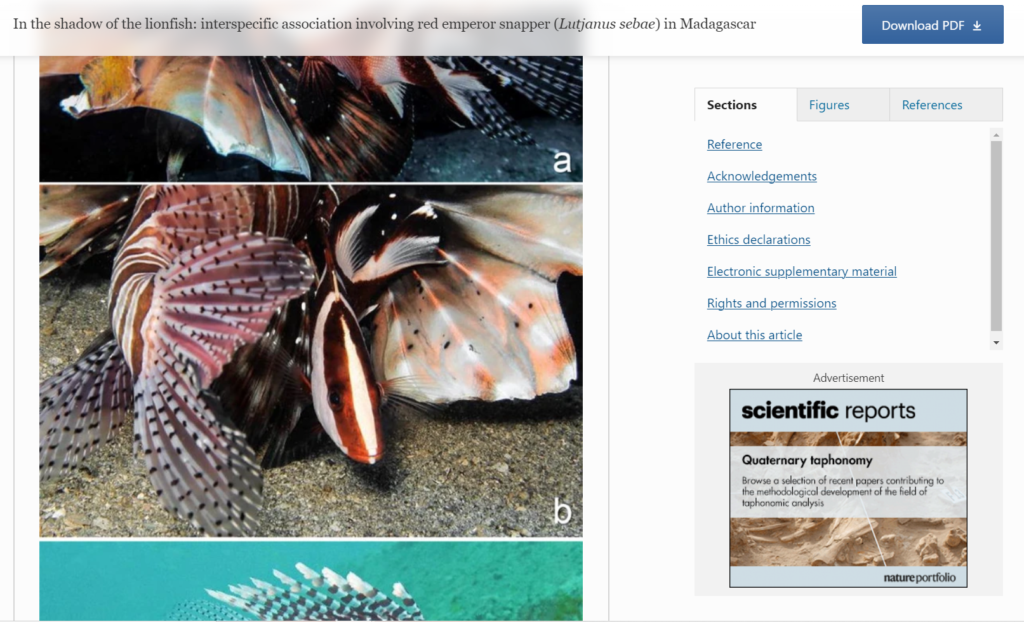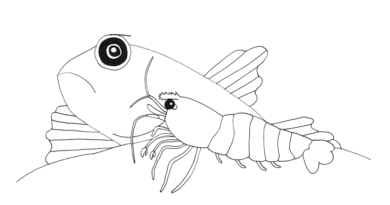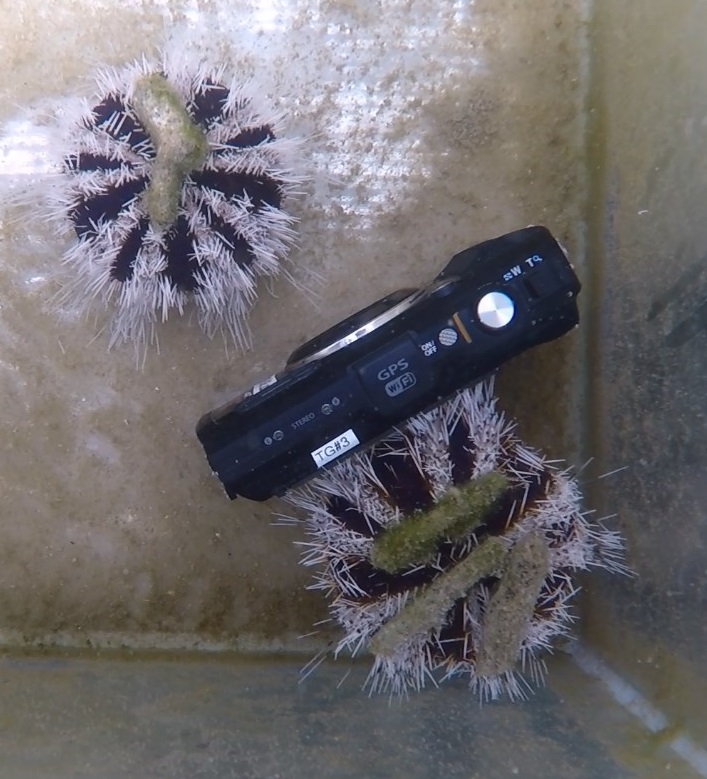A Very Special Snapper
I recently had the chance to film a rather rare interaction between fish, 2 juveniles of Lutjanus sebae, the red emperor snapper and 2 fire urchins. The juveniles very tactically hide between the venomous spines of the urchins.
This is the video:
And…
I posted the video on a marine bio Facebook group, and the author of a very interesting paper, Davide Seveso, commented on the link. He and his team observed in Madagascar that the same species of snapper, also the juveniles, hid between the venomous spines of lionfish!
The authors write ” Since both species share a similar barred light–dark color pattern, the snapper, by swimming next to the lionfish, may prevent visual detection from potential predators through background matching”.
A screen shot from the paper:

This comment made me realize that the snappers also fit into the fire urchins quite well in terms of their colors. Possibly there is an advantage for the snapper due to the venom of the urchins/lionfish and due to the color matching/camouflage. I observed this interaction at night, but it’s quite possible that they start associating before it’s completely dark underwater.
The internet can be a great place for fruitful scientific exchanges and learning! I’m grateful for Davide contacting me.
Questions over Questions
What/if the hosts of the snapper benefit from the associations is still unclear to me (I believe unclear in general).
Why is it that only THIS species of snapper, and only the juveniles which take advantage of these venomous hosts? The family Lutjanidae – Snappers has 113 species, and to my knowledge only the red emperor, and only its juveniles show this kind of behavior. Did the camouflage/red stripes evolve first, or the the hiding-among-spines behavior?
What are the (visual?) cues the juveniles use to detect potential hosts? The stripes?
Best Fishes,
Klaus


